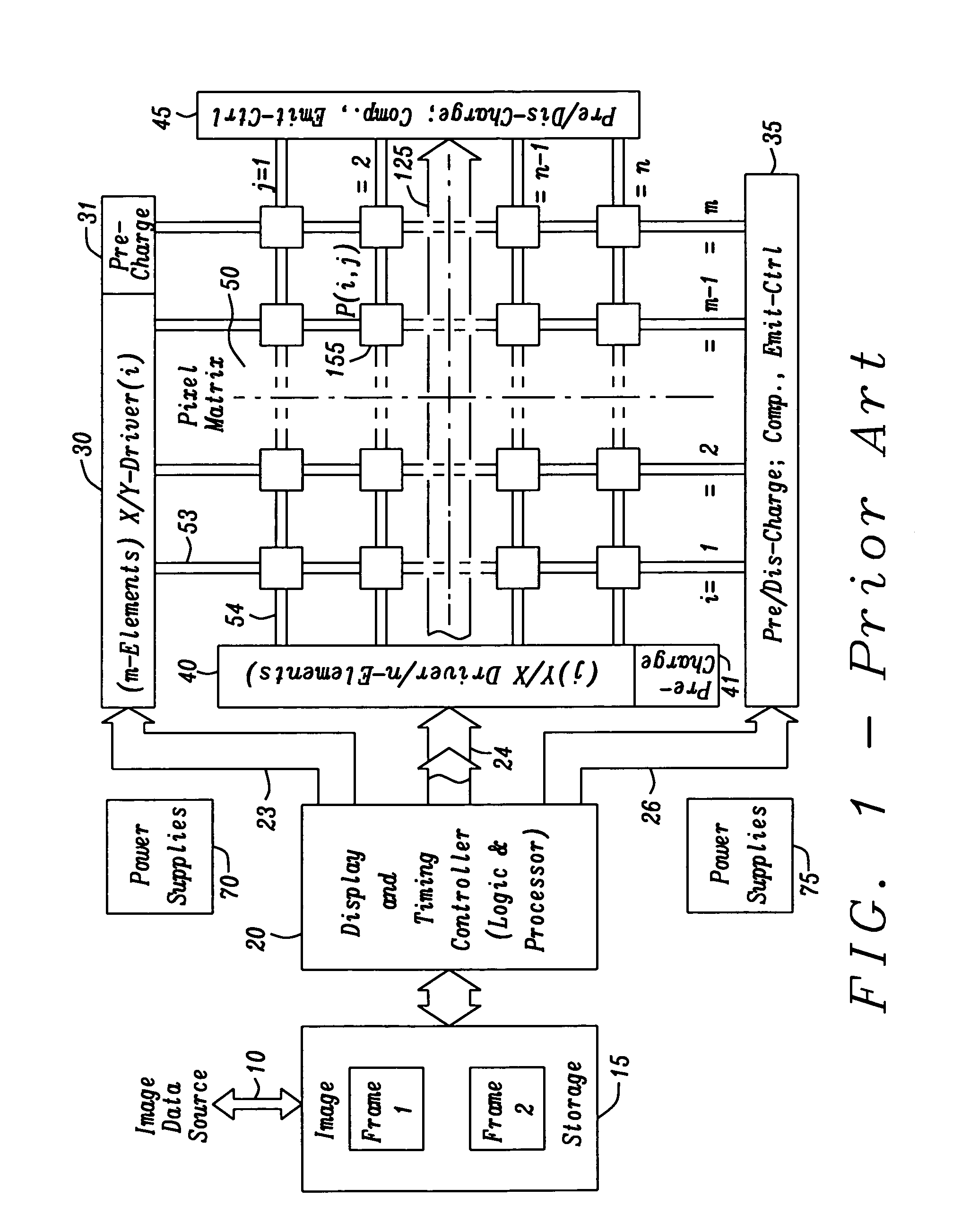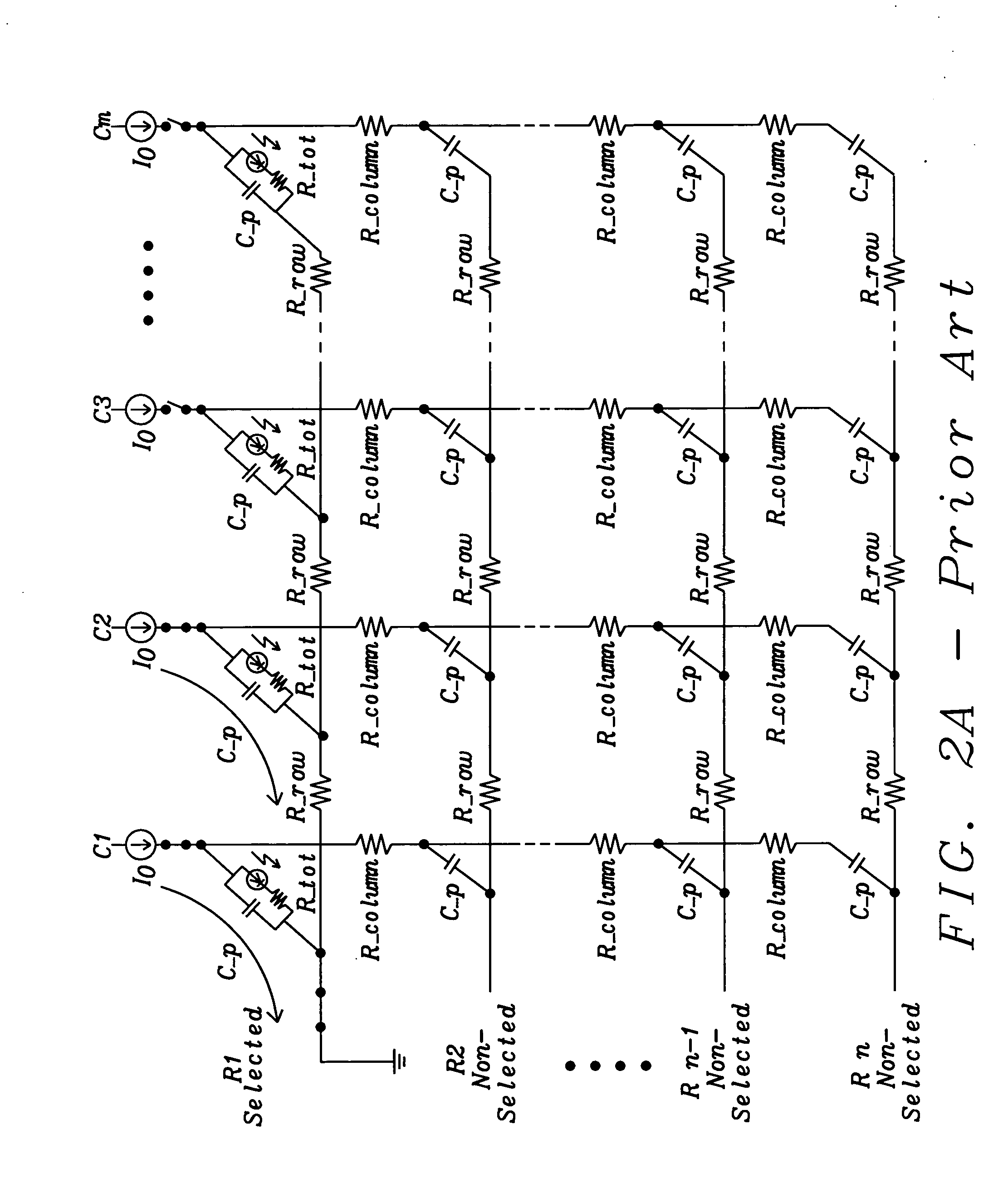Advanced multi line addressing
a multi-line addressing and advanced technology, applied in the field of advanced multi-line addressing, can solve the problems of limited display size of pmoled display devices, increased harmful properties of wires, and increased complexity of display devices, so as to reduce complexity
- Summary
- Abstract
- Description
- Claims
- Application Information
AI Technical Summary
Benefits of technology
Problems solved by technology
Method used
Image
Examples
Embodiment Construction
[0063]The preferred embodiments disclose novel realizations for display controller and driver circuits for FPDs solving the problem of inherent high power consumption of OLED displays and unwanted elevated power consumption by additional MLA scheme calculation operations and are described here by one exemplary showcase circuit of an FPD and especially by a new method of operation according to this invention. The higher the resolution of an FPD with a certain size, the more lines, i.e. rows and columns does it contain. Inherent high power consumption of higher resolution (high-res) OLED displays, especially troublesome for PM types, but to a lesser extent also found within AM types, not only reduces the operating time of portable, battery powered appliances but also reduces the lifetime of OLED displays by heating up the OLED pixel diodes. The reason for this is that in conventional SLA modes the full luminance driving current must be injected into each OLED pixel diode within only o...
PUM
 Login to View More
Login to View More Abstract
Description
Claims
Application Information
 Login to View More
Login to View More - R&D
- Intellectual Property
- Life Sciences
- Materials
- Tech Scout
- Unparalleled Data Quality
- Higher Quality Content
- 60% Fewer Hallucinations
Browse by: Latest US Patents, China's latest patents, Technical Efficacy Thesaurus, Application Domain, Technology Topic, Popular Technical Reports.
© 2025 PatSnap. All rights reserved.Legal|Privacy policy|Modern Slavery Act Transparency Statement|Sitemap|About US| Contact US: help@patsnap.com



